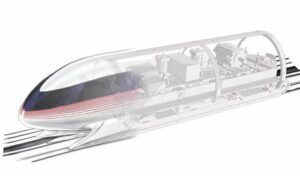Learn more about how your company can get started with this game-changing automation technology!
Procurement is a critical function within any organization, and optimizing it is essential for achieving cost-efficiency, improving supplier relationships, and maintaining a competitive edge. In recent years, Robotic Process Automation (RPA) has emerged as a transformative technology, offering businesses the opportunity to streamline their procurement processes and gain a significant advantage. This article explores the benefits of implementing RPA in procurement and provides insights into how companies can get started with this game-changing automation technology.
Benefits of RPA for Streamlining Procurement
- Enhanced Efficiency: RPA eliminates the need for manual and repetitive tasks in procurement processes. Bots can be programmed to handle tasks such as purchase requisition processing, invoice matching, and supplier onboarding. By automating these mundane activities, RPA frees up valuable time for procurement professionals to focus on strategic decision-making and building strong supplier relationships.
- Cost Savings: Manual procurement processes are not only time-consuming but also prone to errors, leading to financial losses. RPA reduces the risk of human error and ensures accuracy in data entry, thereby preventing costly mistakes. Additionally, by streamlining procurement workflows, RPA minimizes the need for additional workforce, resulting in significant cost savings for the company.
- Faster Processing Times: With RPA, procurement tasks can be executed 24/7 without interruption, significantly reducing processing times. Expedited procurement processes translate to quicker order fulfillment, ensuring that businesses can meet their production or project deadlines promptly. Faster processing times also improve cash flow management, as invoices can be processed and paid in a timely manner.
- Improved Compliance and Governance: RPA allows companies to enforce consistent procurement policies and compliance rules across the organization. Bots can be programmed to adhere to specific procurement guidelines, ensuring that all purchases are made from approved suppliers and comply with internal policies and external regulations.
- Data Insights for Better Decision Making: RPA generates a wealth of data as it processes procurement tasks. This data can be analyzed to gain valuable insights into spending patterns, supplier performance, and potential areas for cost optimization. Armed with data-driven insights, companies can make informed decisions and negotiate better contracts with suppliers.
How to Get Started with RPA in Procurement
- Identify Pain Points: Begin by assessing your current procurement processes and identifying pain points that can be addressed through automation. Look for repetitive tasks, high error rates, and bottlenecks that slow down the procurement workflow.
- Select the Right RPA Tool: Choose an RPA tool that aligns with your company’s needs and integrates well with existing procurement software. Consider factors such as ease of use, scalability, compatibility, and customer support.
- Start with Pilot Projects: To minimize risks and assess the impact of RPA on procurement, start with pilot projects. Select a few specific procurement tasks that are suitable for automation and implement RPA in a controlled environment. Analyze the results and gather feedback from stakeholders to make any necessary adjustments.
- Collaborate with IT and Procurement Teams: Successful RPA implementation requires collaboration between IT and procurement teams. IT teams can provide technical expertise to set up and manage the RPA infrastructure, while procurement professionals can offer valuable insights to optimize the automation processes.
- Monitor and Refine: Once RPA is implemented in procurement, continuously monitor its performance and gather feedback from users. Identify areas for improvement and refine the automation processes as needed to maximize efficiency and ROI.
Robotic Process Automation presents a game-changing opportunity for businesses to streamline their procurement processes, drive efficiency, and achieve cost savings. By leveraging RPA to automate repetitive tasks, companies can enhance accuracy, speed, and compliance while gaining valuable data insights for better decision-making. To embark on the RPA journey successfully, businesses should identify the right tasks to automate, select a suitable RPA tool, and foster collaboration between IT and procurement teams. Embracing RPA in procurement is not just a strategic move for businesses; it is the path to transforming procurement into a more agile and value-driven function that can contribute significantly to overall organizational success.
The Perfect Planner Team is here if you have any questions about Procurement Process Automation, and we offer a free consultation service. If you would like to connect with us on this article or any other topic, please message us on LinkedIn, shoot us an email at info@perfectplanner.io, visit our website at www.perfectplanner.io, or give us a call at 423.458.2979.
Author: Thomas Beil
Publication Date: December 28, 2023
© Copyright 2023 Perfect Planner LLC. All rights reserved.






